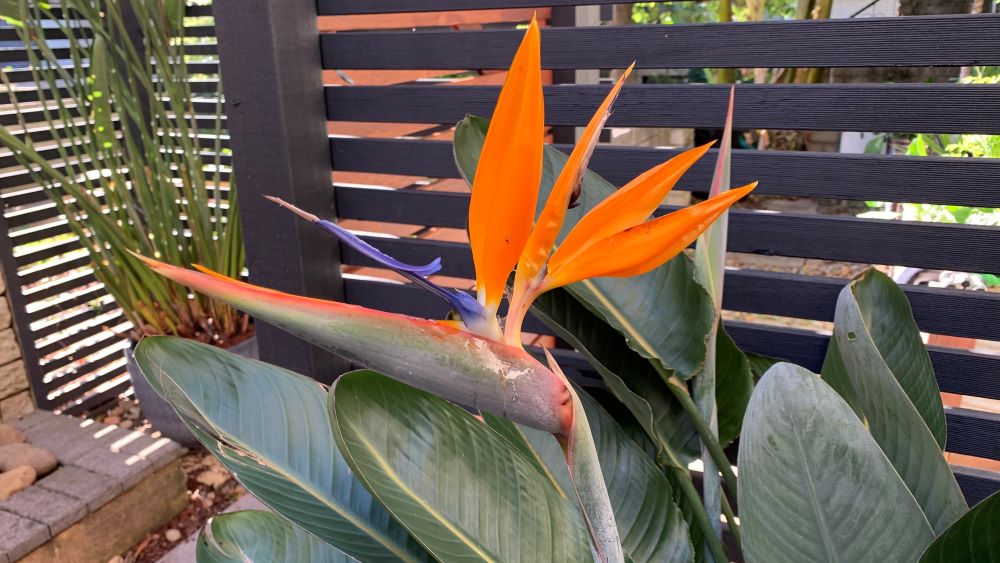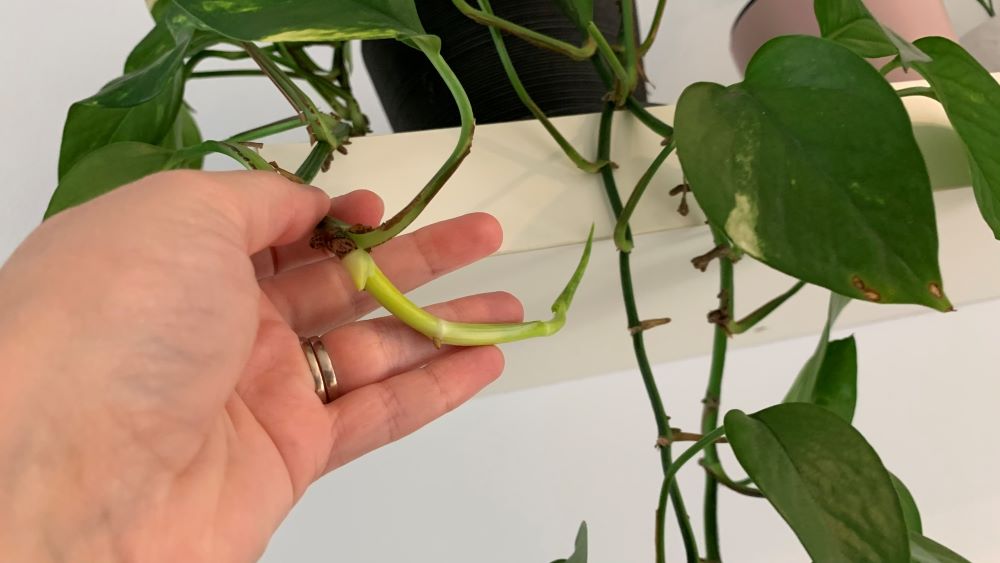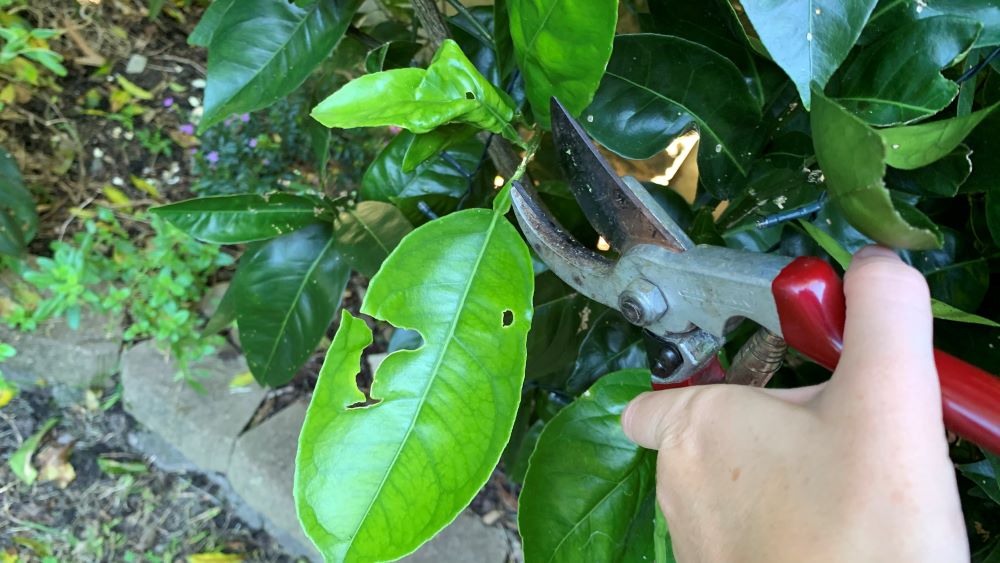Insects and bugs can always find their way to your plants and trees, and if they eat the holes in the leaves, you’ll likely wonder if you should go ahead and cut off the leaves to discard them.
The truth is, that decision will be based on how bad the leaf looks and how much of it has gone bad.
If the leaves are more than half gone or deteriorated, it’s best to remove them altogether. The severity of the damage and the size of the damage should help you make this decision.

3 Reasons to Remove Leaves with Holes
There are three main reasons to remove leaves that have holes in them, and these reasons include the following:
1. To Improve the Health and Appearance of the Plant
If you cut off the unhealthy leaves that have gone bad, the plant will look much better and be healthier as well.
This is because the nutrients that the plant receives will go towards the growing, healthy parts of the plant instead of being sent to the damaged leaves.
The nutrients or resources being utilized by the plant should only go to the healthy parts instead of being wasted on the unhealthy parts.

2. To Encourage New Growth
Cutting off leaves with holes in them can help to remove pests and disease. If the diseased leaves remain on the plant, new growth will be slowed.
Removing the leaves and trimming the stems will encourage plants to branch and send out new shoots. Trimming plants back to a healthy growth point or bud will often stimulate the plant to send out multiple new stems.
Pothos vines can actually continue to grow from the end of the vine when the leaves are trimmed off. Prune them back to a healthy node with an aerial root and you will get new leaves and stems in no time.

New growth only happens when the plant is healthy and when the disease is gone. Otherwise, the plant’s growth is stunted and nothing fresh and green will be able to grow.
3. To Get Rid of Both the Disease and the Pests
Plants will never grow and thrive when pests or diseases have affected them. The more pests or diseases you have, the less likely the plant will grow, get taller, or get healthier.
Both pests and disease always stand in the way of a healthy, lush, and green plant that is as full as it should be.

Cutting off bacterial or fungal infected leaves is a good way to minimize the spread of the disease. These diseases can cause holes in the leaves.
If you have fungal black spot then removing the worst affected leaves is a good idea before the disease spreads further.
How to remove leaves with holes from your plant
Here are my top tips for removing plant leaves with holes.
1. Remove leaves with more than 50% damage
If the leaves on your plants are more than 50% damaged with holes, you should go ahead and remove them. Use a sharp pair of garden secateurs for the best results.
If the leaves have small amounts of damage that have been caused by biting or chewing insects then the leaves can be left on.

Once the snails, slugs and caterpillars have been removed then the leave can continue to grow. The holes will not repair but it can continue to photosynthesize.
Once leaves are damaged beyond 50% then they will usually turn brown and die back eventually.
To be on the safe side, never remove more than one-third of the leaves on your plant.
2. Use clean garden shears to remove the leaves
Always use clean garden shears to trim off any leaves or branches from the damaged plants. This way, you’ll ensure that any disease that might be on one of your other plants won’t spread to the plant you’re working on.
The best way to keep your garden shears clean is to wipe them off with a damp cloth and then spray disinfectant on them every time you use them. This will keep them clean so they can be used safely whenever you need them.
Methylated spirits or eucalyptus oil are great products for cleaning your shears.
This will get rid of any type of disease that might spread to the next plant you work on and ruin that plant as well.
3. Avoid pulling the leaves off by hand
Can you pull the leaves off the plant instead of cutting them? The truth is, you can, but if you tug on the leaf and it’s difficult to remove, you might harm healthy plant tissue.
It is best to remove leaves and stems with clean garden shears or clean garden scissors. Make sure the cut is clean and above a growth node. That way the plant can send out new shoots quickly to replace the damaged leaves.
4. Removing part of the leaf
If you wish to cut off only part of a leaf because the amount of damage on it is small, take garden shears and cut the damaged part of the leaf off.
Large leaves like bird of paradise or palm leaves can continue to photosynthesize even if part has been removed. This is a good idea if your plant only has a small coverage of leaves.
Once new stems have grown then you can remove the leaf all together.
5. Removing yellow leaves with holes
If the leaves are yellow and not brown, you can likely just leave them on the plant. If the yellow leaves have been caused by overwatering or iron deficiency they can recover and turn green again.
Give the plant a dose of iron chelates and the leaves can return to green and recover.
In most cases, just a few yellow leaves aren’t necessarily a bad sign and they will likely fall off by themselves eventually. If there are a lot of yellow leaves, your best bet is to discover what the problem is so you can take care of it
Conclusion
When pruning your plant it’s good to eliminate as many leaves with holes. If the leaves are damaged more than 50%, however, they’ll need to be cut off and discarded. This allows the nutrients to go to the healthy parts of the plant so it can grow and thrive.
It’s always best to use garden shears and cut the leaves off instead of tearing them off, but if they tear off easily this usually means you’re not damaging the plant.
Keeping an eye on the leaves of your plant on a daily basis will help you determine exactly what to do with your damaged leaves, but it certainly isn’t a difficult process.
I am an accredited practicing dietitian, experienced gardener and a dedicated cook. I love writing and sharing my experience so you can learn from my successes and mistakes.
